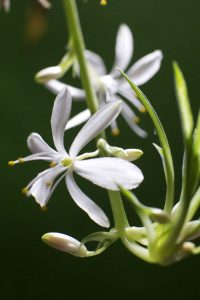Spider plants are cherished for their lush foliage and air-purifying properties. However, getting them to bloom can be a challenge for many plant enthusiasts. Blooming spider plants not only add a touch of elegance to your indoor garden but also signify that your plant is healthy and thriving. If you’ve been wondering how to coax those delicate white flowers from your spider plant, read on for some expert tips and tricks.
Unraveling the Mystery Behind Spider Plant Blooms

Spider plants, scientifically known as Chlorophytum comosum, are native to tropical and southern Africa. These resilient plants have long, arching leaves adorned with tiny plantlets, making them a popular choice for both novice and experienced gardeners. While spider plants are relatively easy to care for, getting them to bloom indoors can be a bit more challenging due to the controlled environment.
Cultivating Bloom-Worthy Conditions

- Provide Adequate Light: Spider plants thrive in bright, indirect sunlight. Place your plant near a window where it can receive plenty of natural light without being exposed to harsh direct sunlight. If natural light is scarce, supplement with artificial grow lights to mimic sunlight.
- Maintain Optimal Temperature and Humidity: Spider plants prefer temperatures between 65°F to 75°F (18°C to 24°C) and moderate humidity levels. Avoid placing your plant near drafts or heaters, as extreme temperature fluctuations can stress the plant and inhibit blooming.
- Proper Watering: Overwatering or underwatering can hinder blooming. Water your spider plant when the top inch of soil feels dry to the touch, and ensure proper drainage to prevent waterlogged roots. Use room-temperature water to avoid shocking the plant.
- Fertilize Sparingly: While spider plants don’t require frequent fertilization, a diluted, balanced fertilizer applied every 2-4 weeks during the growing season (spring and summer) can encourage blooming. Avoid over-fertilizing, as this can lead to fertilizer burn and stunted growth.
- Promote Root Boundness: Spider plants tend to bloom when slightly root-bound. Repotting your plant into a slightly larger container only when absolutely necessary can encourage flowering. However, if your plant is severely root-bound, gently tease the roots apart and repot into fresh soil.
Addressing Common Concerns
- Why Isn’t My Spider Plant Blooming? – Lack of adequate light, improper watering, low humidity, and insufficient fertilization are common reasons why spider plants fail to bloom.
- How Long Does It Take for a Spider Plant to Bloom? – Spider plants typically bloom in late spring to early summer under optimal conditions. However, individual plants may vary, and some may take longer to bloom than others.
- Do All Spider Plants Bloom? – While most spider plants are capable of producing flowers under the right conditions, not all plants may bloom indoors due to environmental factors or genetic predispositions.
Conclusion: Unlocking the secret to making your spider plant bloom can be a rewarding experience for any plant enthusiast. By providing the ideal growing conditions, including adequate light, proper watering, and occasional fertilization, you can encourage your spider plant to produce those coveted white blossoms. Remember to be patient and observant, as each plant may have its own timeline for blooming. We hope these tips help you achieve blooming success with your spider plant! Share your experiences and any additional tips in the comments below. Your feedback is invaluable to us!










